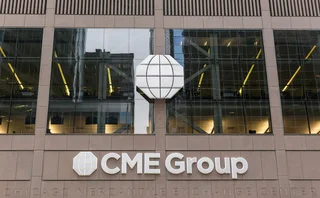
US large bank CRE risks could be understated, say researchers
Community banks have the most direct exposure, but systemic banks extend more credit to REITs

Market participants and regulators may be understating the risk that commercial real estate (CRE) poses for the largest banks in the US, according to a paper by a team of academic researchers.
“Most people, when thinking about commercial real estate, only consider the risks associated with loans on banks’ balance sheets,” says Viral Acharya, a professor at New York University’s Stern School of Business, and a co-author of the paper, Shadow always touches the feet: implications of bank credit
Only users who have a paid subscription or are part of a corporate subscription are able to print or copy content.
To access these options, along with all other subscription benefits, please contact info@risk.net or view our subscription options here: http://subscriptions.risk.net/subscribe
You are currently unable to print this content. Please contact info@risk.net to find out more.
You are currently unable to copy this content. Please contact info@risk.net to find out more.
Copyright Infopro Digital Limited. All rights reserved.
As outlined in our terms and conditions, https://www.infopro-digital.com/terms-and-conditions/subscriptions/ (point 2.4), printing is limited to a single copy.
If you would like to purchase additional rights please email info@risk.net
Copyright Infopro Digital Limited. All rights reserved.
You may share this content using our article tools. As outlined in our terms and conditions, https://www.infopro-digital.com/terms-and-conditions/subscriptions/ (clause 2.4), an Authorised User may only make one copy of the materials for their own personal use. You must also comply with the restrictions in clause 2.5.
If you would like to purchase additional rights please email info@risk.net
More on Risk management
Buffer stop: Eurex clearing members shunt default fund
Clearing house’s CRO says both members and clients opt to pay more margin instead
How a serverless risk engine transformed a digital bank
Migrating to the cloud permitted scalability, faster model updates and a better team structure
During Trump turbulence, value-at-risk may go pop
Trading risk models have been trained in quiet markets, and volatility is now looming
Osttra to launch Treasury clearing middleware
Mid-year delivery expected for system that aids credit checking for repo trades
Banks divided over CME’s done-away model for UST clearing
Buy side could give thumbs-up if questions on margin protection and guarantee fees are answered
Why JP Morgan’s Santos wants to make bad news travel fast
Asset management CRO says sharing information early holds the key to avoiding surprises
Mitigating model risk in AI
Advancing a model risk management framework for AI/machine learning models at financial institutions
BoE warns over risk of system-wide cyber attack
Senior policy official Carolyn Wilkins also expresses concern over global fragmentation of bank regulation








